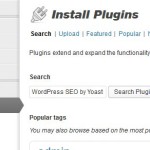Practically since the advent of blogging, people have been proclaiming that blogging is dead. There’s a new eulogy written for blogging every year, from major platforms—respected and popular sources like The Content King, Social Media Today, The Guardian, Politico, and even The New York Times have filled blogging’s grave and written its tombstone. Yet every year, more blogs pop up and more bloggers find success with audiences.
Blogging is nowhere near on its last legs, but some things have changed in the world of online journals since the heyday of Blogger and LiveJournal—and some things have remained the same. Here’s what you should know to start or continue running a successful blog in 2014 and beyond, whether you’re blogging as a primary online presence or working on a small business blog.
Where to Host Your Blog
LiveJournal and Blogger are still around, and still free. In fact, there are plenty of free blogging platforms to choose from, including popular services like Tumblr, Squarespace, TypePad, and WordPress.com. But for today’s blogger, the best choice is nearly always a self-hosted blog that uses the WordPress.org platform.
WordPress.org is free for use. And though you’ll have to pay for hosting, you can find a great web hosting company for around $5 a month. More importantly, WordPress.org offers more features than you’d get with any of the free blogging platforms, including:
- Ad-free blogging
- Unlimited free and paid themes
- Tech support (most top blog platforms offer no support for free blogs)
- Full customization
- The ability to make money (free blogs, including WordPress.com, don’t allow you to profit from your blog)
Images are a Must
In 2014, including visual content on your blog is no longer an option. Images have been proven to increase reader engagement and click-through dramatically in study after study—not to mention there are entire, hugely successful networks like YouTube, Pinterest, and Instagram based completely on images. As a blogger, you’re competing with all of that content, and you need to keep up.
There are a few ways to ensure a steady supply of images for your blog. One is with stock photography. You can find stock photos that are free for personal use, though your selection will be limited and plenty of others will use the same images. For a broader variety and better content-image matches, you might use a stock photo subscription services like Dreamstime or Bigstock, which gives you a certain number of images per day or month for a monthly fee.
If an image subscription service is out of your price range, consider investing in a quality digital camera so you can take your own photos. You may also be able to use a smartphone with a high-resolution camera, though you’ll need some practice taking good shots with a phone.
Long-Form Content is Still Effective
With social networks like Facebook and Twitter forcing people to edit their thoughts into concise snippets, it’s easy to believe that no one reads longer content any more. However, your audience still wants detailed, in-depth pieces that are engaging and tell a great story, while delivering valuable information.
Cutting longer content from your blog completely will reduce your platform to social media levels and negate the benefits of blogging. A better strategy is to publish a mix of long and short pieces that lets your readers know they can expect both brief, entertaining reads and highly valuable articles from you.
Promoting Your Blog Will Cost You (A Little)
Many bloggers are hesitant to spend money on advertising. But the simple truth is that the most successful online destinations promote with a mixture of paid, owned, and earned media—and you don’t have to pay all that much to get results. Social media paid advertising like Facebook promoted posts, sponsored or promoted tweets on Twitter, and even sponsored updates on LinkedIn can deliver excellent ROI for blogger and cost just a few pennies per click.
Your Mailing List is Still the Best Marketing Tool
Just as it’s been since blogging became popular, growing an email subscriber list remains the number one way to promote your blog. Email lists send your blog posts directly to your readers’ inboxes, reminding them that you’re still there and publishing great content. You’ll also see more and better quality traffic from a mailing list than with any SEO tactics or social sharing (although these strategies should be included in your marketing mix).
Rather than relying on your blog platform or site host’s notification service, use a mailing list provider like MailChimp or Aweber to build and manage your subscriber list. You’ll have more control over what comes in and goes out, and the ability to customize the look of your notifications to match your blog’s brand. Most major email list services provide plugins that work with blogging platforms.
Much like Jackie Chan, the death of blogging has been announced repeatedly and prematurely. You can create or continue a successful blog in 2014 and beyond by staying on top of blogging trends, providing great content paired with eye-catching visuals, and investing a little money to get the word out about your blog.
Image courtesy of Sean MacEntee









Comments are closed.